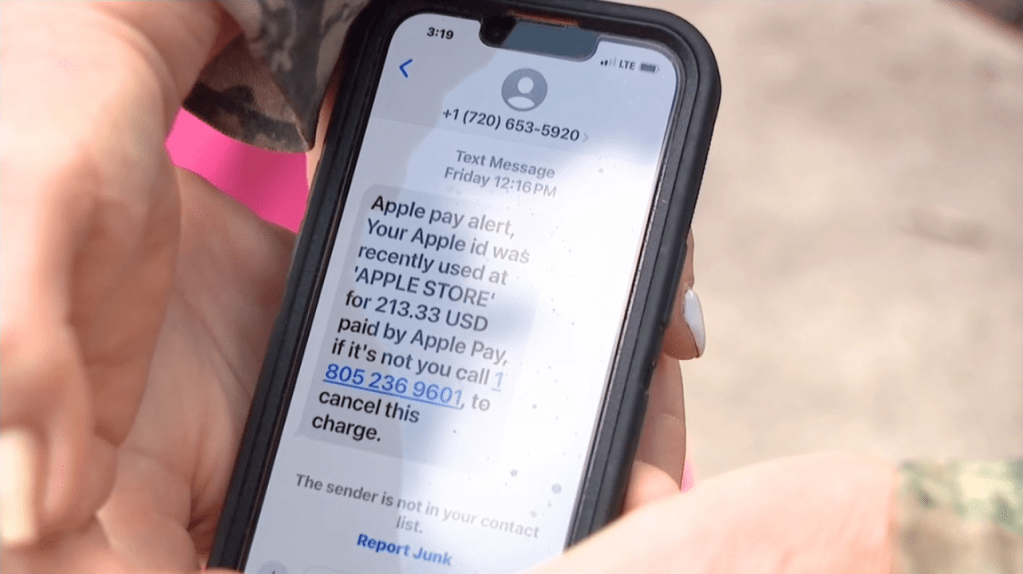You’ve probably heard about people scamming from halfway around the world, but sometimes they turn up at your door.
That’s what happened in May, when 67 year-old Robert Wise of Ohio received a text telling him that his Apple ID had been compromised. It had been used at an Apple store for a $213 purchase, the text message said.

After calling the number on the phone, a man identifying himself as John Cooper said that thieves had racked up a total of $27,000 in charges in his name. Unless Wise withdrew $27,000 from his account immediately, it would be drained, the man said.
As you’ve probably already guessed, there had been no $27,000 theft. At least, not yet. According to local news reports, the man at the other end of the line tried to get Wise to deposit the money into a bitcoin machine to send him the funds.

When Wise tried and failed to do that, the crook said he’d send someone to collect the money in person. This is where 42 year-old Liwei Zhang turned up at the victim’s door and Wise handed the money over.
All might have been well save for the thief’s greed. Zhang arranged to come back and collect more money from Wise, who by this time had finally grown suspicious and called the sheriff. The sheriff told Wise to keep the criminal engaged and they managed to catch the thief at the scene.
Zhang, a Chinese national who was in the country on a business visa, now faces charges of theft, identity fraud and telecommunications fraud. He told law enforcement officers that he was just a middleman, and “felt that he was doing this revolving criminal activity”.
This isn’t an isolated case. Last month, officers in Kentucky arrested a Canadian citizen, Jia Hua Liu. Liu, who was in the US, had targeted multiple elderly victims with scams and then turned up at their homes to collect money. He had collected over $300,000 in total.
Last year, 21 year-old Tejaskumar Patel was arrested after collecting gold bars from a Florida resident. The victim, a retired marine, had been told he needed to pay to free himself from arrest warrants (which were fake). Officers only caught Patel after coming back for more gold, because the victim had called the police.
There are plenty of cases like these. Scamming this way is a reliable last resort for thieves because it will often be easier to collect cash personally from non-tech-savvy people rather than getting them to successfully make a bitcoin transaction.
However, the scammers also place themselves in great personal danger if a victim gets suspicious. Especially if they’re greedy enough to push their luck and come back for more.
Protecting yourself is simple:
- Be on the lookout for telltale signs that a text is a scam. These include slight language errors and a sense of urgency.
- Don’t respond directly to any text messages telling you about scams or making legal threats.
- If the texts have you worried, verify them independently by calling the organization they’re supposed to be from. Use a number obtained independently to ensure you’re calling the right place, and don’t use the number in the text. If the organization can’t verify a text, it’s a scam.
- Never send money to a stranger or give them money in person. No legitimate organization should ever ask for cash at the door, unless they’re wearing Girl Scout vests and come bearing cookies. If you’re spending $27,000 on Girl Scout cookies, you have bigger problems.
- If you’re truly stumped about a text message and want some immediate, AI-assisted help, 24/7, try Malwarebytes Scam Guard for free.
Unfortunately, many elderly victims are more vulnerable to scams, as data shows, and may not heed such advice. That’s why it’s important to check in regularly with elderly friends or family to ensure that they aren’t involved in any such transactions.
Liu failed to scam $70,000 from some potential victims because their family members had found out what was going on and intervened. When scams targeting the elderly are so common, it’s important that someone has their back.
We don’t just report on scans—we help detect them
Cybersecurity risks should never spread beyond a headline. If something looks dodgy to you, check if it’s a scam using Malwarebytes Scam Guard, a feature of our mobile protection products. Submit a screenshot, paste suspicious content, or share a text or phone number, and we’ll tell you if it’s a scam or legit. Download Malwarebytes Mobile Security for iOS or Android and try it today!



